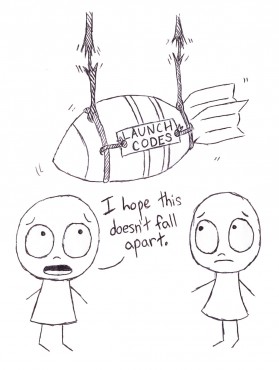July 16, 2015, marks the 70th anniversary of the birth of the nuclear age — starting with the first atomic test in Los Alamos, N.M. as part of the Manhattan Project’s aim to develop an atomic bomb before the Nazis did. Watching the fireball rise, lead scientist J. Robert Oppenheimer remarked on its significance, quoting the Hindu Baghavad Gita: “Now I have Become Death — the Destroyer of Worlds.”
Since then, the scientific enterprise of nuclear research has branched out into providing peaceful energy alongside higher-yield weapons hundreds to thousands of times more powerful than the ones used against Japan 70 summers ago.
Once the Americans had the bomb, the Soviets responded to fears of a nuclear monopoly that could trump military capabilities in Eastern Europe and the Far East. Then the British, the French and the Chinese followed suit in a five-nation arms race. Over the course of the Cold War, the “Big Five” tried to halt the spread of such weapons through the Non-Proliferation Treaty in 1968, while stockpiles between the superpowers were limited via the Strategic Arms Limitations Treaty (SALT I & II) and reduced (Strategic Arms Reduction Treaty
— START). Forty years later, however, India, Pakistan, Israel, and finally North Korea have joined the world’s most dangerous club.
Although the Cold War is over, the nuclear threat still remains; armed silos, bombers, and ballistic missile submarines all stand ready as part of these nations’ ability to deter — and hopefully never respond to
— geopolitical security threats. According to analyses by the International Campaign to Abolish Nuclear Weapons (ICAN), the Bulletin of Atomic Scientists, and other advocacy groups, some 15 000 active warheads stand between Russia and the United States with the afore-mentioned nations sharing the rest in smaller stockpiles (in a dominantly strategic position). The recent acquiring of such weapons by North Korea, alleged Iranian attempts to build one of their own, and the most critical standoff in the Black Sea between NATO and Putinist Russia over Eastern Ukraine highlight the possibility — not probability — that a nuclear strike (accidental or not) can still trigger a retaliation of multi-Holocaust casualties. Today, the atomic-fuelled Sword of Damocles hangs by a weakening thread. And not just because of the sabre rattling overseas; the hair-trigger status of many weapons means that they can be launched within minutes of being ordered, while the technology and human security functions behind them are seriously lacking (as Last Week Tonight’s John Oliver explained hilariously).
The arguments against massive nuclear buildup are relatively balanced: nuclear deterrence (which implies Mutually Assured Destruction) shows that, regardless of a first strike against military or civilian targets, an exchange would likely involve mass casualties of life, devastation of societies, and envi-ronmental damage that would affect survival rates for generations to come.
Alternatively, opponents of deter-rence state that it begs the question of predicting your opponent’s psyche and having information that isn’t always available on demand or reliable — a dangerous shot in the dark either way. We would have liked to believe dropping the bomb on Hiroshima meant that war was a thing of the past, but nuclear arms don’t prevent wars from breaking out either; they may deter major powers from getting dragged into conflicts like a world war, but they offer little assurance against getting involved in localized conflicts featuring asymmetrical warfare.
Even nuclear energy use has its drawbacks; if you don’t use it properly, it eats you (and anyone close enough) alive with radioactive decay and poisoning of the environment. The benefits, however, get more bang for the buck invested in such technologies, primarily because of the current debate around energy and climate change. Still, that hasn’t stopped disasters
from occurring in places like Chernobyl or Fukushima.
However, the one thing about harnessing the atom is that it brought the human species to a focal point: From now on, our sciences and politics would be intertwined with how we utilized the discovery of nuclear power — be it for peaceful energy production or construction of megaton bombs. But most importantly, it gave civilization the ability to self-destruct by its own hands — something never thought possible until that moment.
Famed astronomer and science popularizer Carl Sagan said that “every thinking person fears nuclear war and every technological nation prepares for it; everyone knows it’s madness, and every nation has an excuse.” The mixing of political considerations and unsteady scientific endeavours have made every move with nuclear power both risky and exploitive. Our global squabbles aside, “all men & women are cremated equal” as someone once said. It’s irritating and insanely (although subconsciously) cumbersome that one has to live in a time when we could do ourselves in from our own stupidity. At least these days we acknowledge it more than ever.









